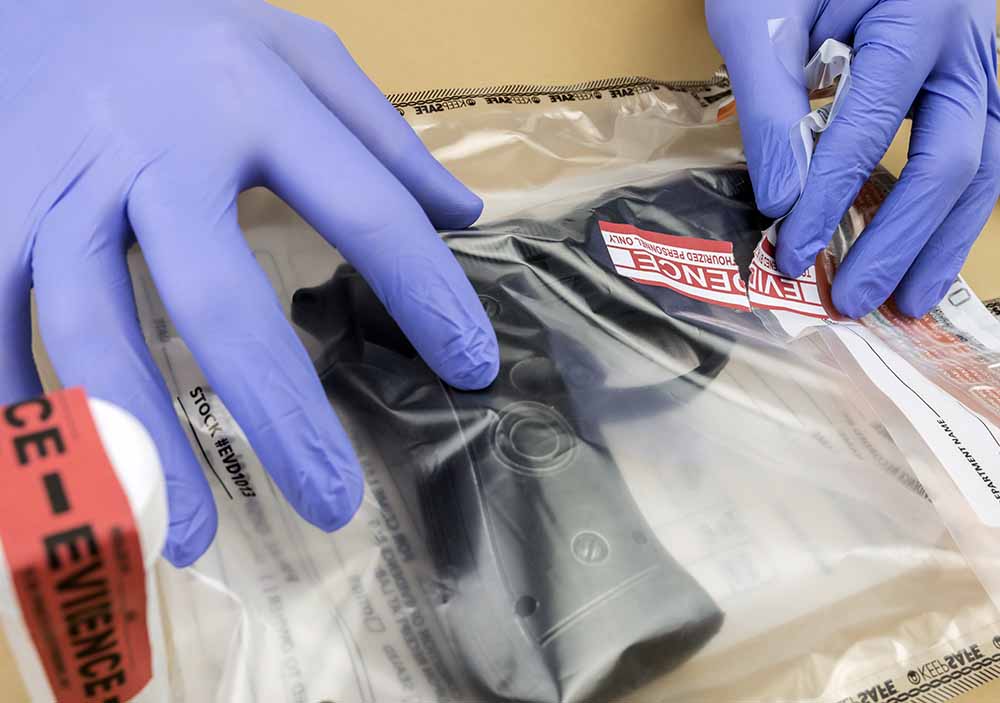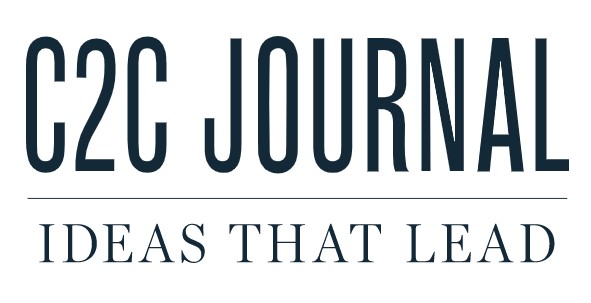An analysis by the CBC covering two decades of homicide statistics for Winnipeg reveals a major shift in the types of weapons used in the incidents. Winnipeg has seen 42 homicides to date in 2019, more than in any other previous ten-year period.1 Winnipeg police seized 1,771 guns in 2018, up from 1,195 in 2017 and 825 seizures in 2016.2
Police statistics indicate that in the last four years, crimes where a firearm was involved increased by 66 per cent in Winnipeg — up from 192 in 2014 to 319 in 2018.
According to the report nearly 40 per cent of those 42 homicides were the result of a shooting — a notable change in a city where stabbings and physical assaults have been the leading causes of violent deaths. The shooting deaths in 2019 far surpass the 12 in 2008 — the year with the next highest number of gun-related homicides. Last year Winnipeg reported only three homicides that involved shootings.3
Police officials attribute this spike in gun deaths to a “trend that has been years in the making”, and attribute it primarily to the emergence of street gangs and organized crime involved in the illicit drug trade.
Gun violence is not unique to Winnipeg however. Canada’s largest city, Toronto had recorded 68 homicides to date December 16 of this year, down from 93 in 2018, but up from 62 in 2017. There were 464 shootings in Toronto to date December 16, compared to 399 in 2018 and 370 in 2017.
Of the 68 homicides to date in Toronto, 41 involved a firearm. In 2018, 48 of the 62 homicides involved shootings and in 2017, 38 of the 51 homicides involved shootings.
What is common to both Winnipeg and Toronto and other cities across the country is that most shootings are associated with gang activity, drug trafficking, and turf wars with police agencies across Canada reporting increases in gun seizures.
Police services across Canada report that there is an increasing preference for domestically stolen and straw purchases – purchases by licensed gun owners buying firearms and selling them to people who wouldn’t be allowed to buy a gun themselves.
Even more concerning is a trend in the use of so called ghost guns – guns manufactured illegally at home using component or manufactured components. Ghost guns being favoured by criminals because they are untraceable.
By September of this year, Winnipeg police had seized 70 homemade guns, up from 52 in 2018, 6 in 2017, and 3 in 2016.4
Seizures of ghost guns have been reported across Canada, including a seizure of four homemade MAC-11 submachine pistols capable of discharging 32 rounds in two seconds. And to complicate matters, anyone can easily find instructions on the internet on how to build homemade firearms, including an M-16 or MAC-11.
The Ontario Provincial Police recently seized 38 home made guns manufactured using easily obtainable unregulated parts; a trend seen across the country.5
Wes Winkel, president of the Canadian Sporting Arms and Ammunition Association (CSAAA) notes that making firearms at home only requires generic parts available at any hardware store: springs, pins, and screws that would be virtually impossible to regulate.
This is an especially concerning trend given as Winkel notes: “There is no way to control springs and screws. You simply can’t control every piece of metal in the world.”
According to the CSAAA, manufacturers are also devising ways of skirting regulations by designing firearms called 80-per-cent guns – firearms fabricated specifically to fall outside the legal threshold for a firearm. These 80-per-cent guns can be turned into fully functional firearms by following readily available instructions online and with few minor modifications.6
In addition to straw purchases, ghost guns, and 80-percent guns, there is an even more alarming prospect, the arrival of the untraceable, undetectable 3D-fabricated handgun. Instructions for fabricating the “Liberator” plastic pistol are posted online for anyone to download. The previously-banned weapon can be made using a 3D printer, and is untraceable and invisible to metal detectors.
Ottawa committed $51.2 million for the Canada Border Services Agency over a five-year period that started in 2018-19 for efforts to keep firearms from coming into Canada illegally. The fact that criminals have resorted to the use of crude home made hand guns may be an indication of the success of cross-border interdiction of firearm trafficking.
It may also mean that firearms traffickers have become more proficient in evading detection by resorting to the dark net — the hidden part of the internet accessible only through proprietary software where vendors resort to ingenious means for the stealth shipping of concealed firearms and related components. This, however, remains to be determined.
According to Sgt. Marie Damian, the Canadian Firearms Program has no national repository that collects information or tracks national statistics with regard to the origin of crime guns.7 Lynn Barr-Telford, director-general in charge of justice surveys at Statistics Canada, is also on record stating: “We don’t know the origin of firearms involved in gun crime in Canada”.8
What we can be certain of is that there is no shortage of firearms in Canada, that firearms are easily available to criminals, that trafficking in firearms continues to be a lucrative business, and that criminals are not deterred from using firearms.
Gun buyback or amnesty programs have also been tried to supplement strategies to remove unwanted firearms from the streets. For example, the Manitoba gun amnesty program in June of 2019, involving thirteen different police agencies, collected 700 firearms and 22,000 rounds of ammunition.9
A similar program in Saskatchewan collected 300 firearms in 2019.10
The Toronto Police Service’s most recent gun buyback program from April 26 to May 17, which paid $200 for long guns and $350 for handguns and collected more than 3,000 firearms, made it the most successful in the service’s history.11
Such programs are conducted across Canada, however just as guns are taken out of circulation new ones seem to appear on the streets.12
It may be shocking that even trained security officials have lost or had their firearms stolen in alarmingly significant numbers. According to data provided by the RCMP police and public agencies in Canada reported 469 handguns reported as lost and another 117 handguns as stolen between 2005-2019. These include 11 sub machine guns, a fully automatic C-8, and a Federal M201-Z Riot Gun.13
Even the Department of Defence (DND) has not been able to prevent theft or losses of firearms, which reported 559 firearms lost by the military and another 14 stolen between 2008-18.14
It is not surprising that the tried and tested call for action and response from the police is the tough on crime approach. More officers dedicated to street crime enforcement, gangs and guns units, and demands for stiffer bail and longer sentences.
That’s fine; firearms regulations can only go so far and gang members and criminals ready to purchase and use firearms, with increasing sophistication for concealing traceability are not likely to be stopped or easily rehabilitated. Strict bail and parole enforcement, focused enforcement and zero tolerance against firearms offence are a logical approach for maintaining public safety.
The obvious responses include increased uniform patrols in areas prone to gang activity and violent crimes; increasing focus on the enforcement of bail and parole conditions; enhanced undercover operations against gangs, drug trafficking, and firearms offences; enhancing intelligence-led initiatives through surveillance, informants, agents, and covert initiatives; improved community participation through intake of anonymous sources information such as Crime Stoppers; and greater commitment to seek stiffer sentences for offenders.
Police can develop lists of outstanding warrants for violent offenders and hold officers or teams of officers responsible for executing those warrants, effecting arrests, and laying of appropriate charges to support prosecutions that result in the stiffest sentences possible. Community response units may be assigned directed patrol to specific problem areas with the goal of increasing time spent within those areas. Officers may also be assigned to conducting investigations of proceeds of crimes, enforcement of immigration laws against violent offenders who have been subject to deportation, and collaboration with partner agencies to share actionable intelligence.
All of these responses are common sense responses for those in law enforcement. These are the obvious, tried and tested responses to crime and disorder management. This all-out effort to control increasing violent crimes, however, requires careful assessment of the effectiveness with which enforcement is directed.
Regrettably, however, too many statements by current police leaders are very reminiscent of the statements of previous police leaders during earlier periods of elevated violent crime.
The responses then and now continue to be too narrow, and statements by police leaders to the effect that present violent crime patterns have been long in the making are recognition of the failure of previous strategies. Strategies that too often remain unchanged and are being resorted to once again.
Enforcement requires long-term solutions in order to be effective. In addition to enforcement, police services need to institute gang exit programs, rehabilitative and job training within corrections institutions.
Corrections facilities are called that because they are intended to provide correction of accused; instead our corrections facilities have become holding facilities with few effective rehabilitative programs. Correctional institutions must include programs for the safe and effective reintegration of those who are released back into society.
Corrections facilities need to have their performance measured on recidivism rates and not solely on their capacity to manage inmates. Just as the effectiveness of policing is based on prevention and enforcement, those downstream must do more than simply warehouse offenders.
There must also be a proportionate increase in the support for the victims and victimized communities, and for the families of the accused.
How police respond to the present generation of criminals, and how their apprehension and detention is executed will have a direct impact on the families of the accused. The execution of zero-tolerance strategies could result in another generation of citizens who view the police as heavy-handed and unfair.
That means police leaders must redouble their community-based policing efforts. Community policing should not be a fair-weather strategy. It’s even more critical when officers must serve as guardians of public safety against the most violent offenders.
The prevalence of stolen firearms, straw purchases, 80-percent firearms, and ghost guns, the dark web and stealth shipping, and now 3-D fabricated firearms should be an indication that enforcement and regulations will not eliminate or suppress firearms trafficking.
The challenge of gangs, guns, and violent crimes cannot be successfully addressed through enforcement, arrests, and regulations. The solution lies in addressing the causes that drive young persons on a trajectory of crime.
[show_more more=”See ENDNOTES” less=”Close ENDNOTES”]
Endnotes
- CBC. Shooting deaths soar as Winnipeg sees record number of homicides. https://www.cbc.ca/news/canada/manitoba/winnipeg-gun-homicides-analysis-1.5401431
- CBC. Gun crime spikes as firearms become easier to get, Winnipeg police chief says. https://www.cbc.ca/news/canada/manitoba/gun-crime-up-police-1.5283766
- CBC. Shooting deaths soar as Winnipeg sees record number of homicides. https://www.cbc.ca/news/canada/manitoba/winnipeg-gun-homicides-analysis-1.5401431
- CBC. Winnipeg police hunting for maker of homemade guns. https://www.cbc.ca/news/canada/manitoba/homemade-guns-winnipeg-police-1.5399233
- York Region. ‘Ghost guns’: Homemade, unregulated guns contributing to crime in GTA. https://www.yorkregion.com/news-story/9077780–ghost-guns-homemade-unregulated-guns-contributing-to-crime-in-gta/
- The Globe and Mail. Police say they have busted an alleged gun-manufacturing ring in the Toronto area. https://www.theglobeandmail.com/canada/article-police-say-they-have-busted-gun-manufacturing-ring-in-the-toronto-area/
- CBC. Canada can’t say where its crime guns are coming from. https://www.cbc.ca/news/politics/gun-crime-statistics-1.4779702
- CBC. Canada can’t say where its crime guns are coming from. https://www.cbc.ca/news/politics/gun-crime-statistics-1.4779702
- Global News. Manitoba gun amnesty pulls in almost 700 unwanted firearms. https://globalnews.ca/news/4363284/manitoba-gun-amnesty-pulls-in-almost-700-unwanted-firearms/
- Global News. Nearly 300 firearms collected through Saskatchewan-wide gun amnesty program. https://globalnews.ca/news/5255399/firearms-saskatchewan-gun-amnesty-program/
- CTV News. More than 3,000 guns collected in Toronto during 2019 buyback program. https://toronto.ctvnews.ca/more-than-3-000-guns-collected-in-toronto-during-2019-buyback-program-1.4475316
- CBC. Black market guns: Where they’re coming from and how they get into the hands of criminals. https://www.cbc.ca/news/national-gun-trafficking-straw-buying-smuggling-firearms-1.5126228
- Toronto Sun. LILLEY: Hundreds of guns go missing from the Mounties, military and other departments. https://torontosun.com/opinion/columnists/lilley-hundreds-of-guns-go-missing-from-the-mounties-military-and-other-departments
- Toronto Sun. LILLEY: Hundreds of guns go missing from the Mounties, military and other departments. https://torontosun.com/opinion/columnists/lilley-hundreds-of-guns-go-missing-from-the-mounties-military-and-other-departments
[/show_more]
______________
Anil Anand is a Research Associate with the Frontier Centre for Public Policy. Anil served as a police officer for 29 years; during his career some of his assignments included divisional officer, undercover narcotics officer, and intelligence officer. He has worked in Professional Standards, Business Intelligence, Corporate Communications, the Ipperwash Inquiry (judicial public inquiry), and Interpol.



